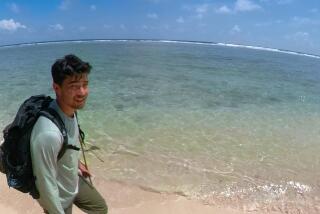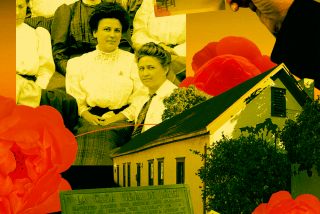Heritage of ‘The Last Indian’ Still Lives
- Share via
“Poor old Rogerio Rocha . . . “
Those were the opening words of a popular 1904 account of the death of “The Last Indian” associated with the San Fernando Mission.
With the mission on the eve of its bicentennial, current technology is permitting more careful chronicling of the lives of those first inhabitants.
Such is the case with Rogerio (per custom, he took a surname in the late 1800s). Legend gives him a life span of 110 years. A 1924 Kansas City news article has him thrown into Pacoima Creek and left to drown by land-greedy whites, but researchers now say he died of natural causes in his 80s. The newspaper also said he was the only person to know the location of a mine from which gold was extracted to make items for the mission.
Sifting through the “lost gold mine” tales associated with the missions, as well as church and government records, is the challenge facing John R. Johnson, PhD, curator of anthropology for the Santa Barbara Museum of Natural History. The entry of birth and other records on a computer database is gradually reconstructing the lives of individual Indians, including Rogerio, Johnson explained.
The son of a Chumash father from the Moorpark area and a Fernanden~o mother from Tujunga, Rogerio was born in the 1820s and married a woman named Manuela in 1841. Their only child, Joaquina, died within a year of her birth in 1843.
Trained as a metalworker, Rogerio was capitan of the multi-tribal Indian community at San Fernando Mission. Records show he traveled to Saticoy in the 1860s to represent his people at a gathering of Native Americans.
Despite efforts to protect his and the Spanish land grant rights of other Indians given mission property, Rogerio was evicted by two ex-state senators in the 1870s. His death in 1904 at around age 80, said Johnson, did not mark the end of Mission Indians.
“The Indian community of the Valley got overwhelmed by urban Los Angeles, but there are still people living today in the Valley who are of San Fernando Indian heritage,” he said.
“There is continuity from those before the mission tribes on down to the present.”
More to Read
Sign up for Essential California
The most important California stories and recommendations in your inbox every morning.
You may occasionally receive promotional content from the Los Angeles Times.













